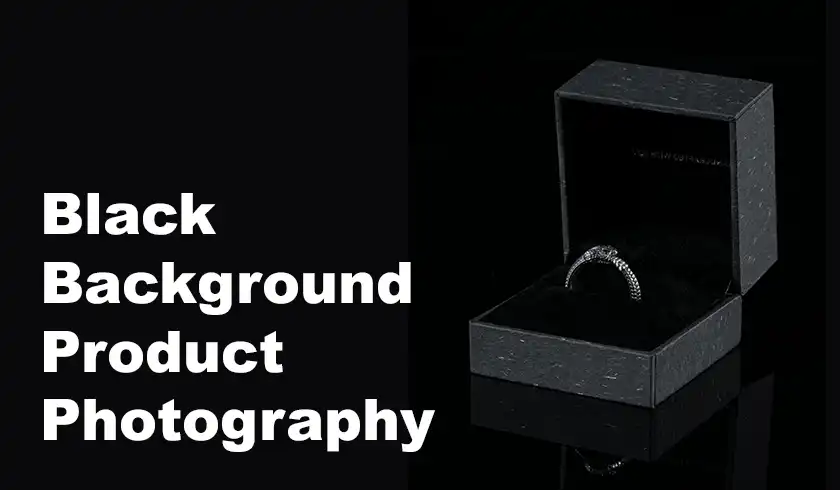
Gone are the days when professional-looking photography required expensive DSLR cameras and years of technical expertise. Today, the device in your pocket has the potential to capture stunning images that rival those taken with high-end equipment.
The key to transforming your iPhone photos from ordinary snapshots to professional-grade images lies in understanding the right techniques, tools, and creative approaches. This article will walk you through every aspect of iPhone photography, from mastering the basics to advanced editing techniques, helping you elevate your photos to a professional level.
Rule #1: Master Composition Techniques
Rule of Thirds
The rule of thirds is a fundamental composition principle. Imagine your frame divided into a 3×3 grid (which you can actually enable in your iPhone’s camera settings). Placing key elements along these lines or at their intersections creates a more balanced and visually appealing image. Studies have shown that images composed using the rule of thirds are perceived as more aesthetically pleasing by viewers.
Leading Lines
Leading lines are powerful compositional tools that guide the viewer’s eye through the image. They can be straight, curved, or even implied. In urban settings, look for architectural elements like roads, buildings, or bridges to create strong leading lines. In nature, rivers, tree lines, or mountain ridges can serve the same purpose.
Symmetry and Patterns
The human brain is naturally drawn to symmetry and patterns. Identifying and capturing these elements can create visually striking images. Look for reflections in water, architectural details, or repeating natural patterns to add interest to your compositions.
Framing
Using natural elements to frame your subject can add depth and context to your images. Doorways, arches, or overhanging branches can all serve as effective frames, drawing attention to your main subject while providing additional visual interest.
Perspective and Angles
Experimenting with unique perspectives can transform ordinary scenes into extraordinary images. Get low to the ground for a worm’s eye view, or find an elevated position for a bird’s eye perspective. Tilting your iPhone can create dynamic diagonal compositions that add energy to your photos.

Image: photography composition techniques example
Rule #2: Optimize iPhone Camera Settings
Exposure and Focus Control
To adjust exposure, tap on the screen and slide the sun icon up or down. For precise focus control, tap and hold on your subject until you see “AE/AF LOCK” appear. This locks both focus and exposure, allowing you to recompose your shot without losing your settings.
HDR Mode
High Dynamic Range (HDR) mode is particularly useful for high-contrast scenes. When enabled, your iPhone takes multiple exposures and combines them, preserving detail in both highlights and shadows. Recent iPhone models offer Smart HDR, which uses machine learning to optimize this process automatically.
Burst Mode
For action shots, burst mode is invaluable. On newer iPhones, simply slide the shutter button to the left and hold to capture a rapid sequence of images. You can then choose the best shot from the series, ensuring you don’t miss the perfect moment.
Aspect Ratios
The iPhone offers several aspect ratios: 4:3 (default), 16:9 (widescreen), and 1:1 (square). Experiment with these to find the best fit for your composition. Remember, square format is particularly well-suited for Instagram posts.
RAW Capture
For maximum editing flexibility, consider shooting in RAW format. This preserves all the data captured by the sensor, allowing for more extensive adjustments in post-processing. To enable RAW capture, you’ll need to use a third-party app like Halide or enable ProRAW on compatible iPhone models.
Rule #3: Leverage Natural Light
Golden Hour Photography
The hour after sunrise and before sunset, known as the “golden hour,” provides soft, warm light that’s ideal for photography. During this time, shadows are longer and softer, creating a flattering effect for portraits and landscapes alike. Apps like Golden Hour One can help you predict the best times for golden hour shots in your location.
Avoiding Harsh Midday Sun
Direct overhead sunlight can create unflattering shadows and high contrast. When shooting during midday, seek out shade or use diffusers to soften the light. Alternatively, embrace the harsh light for dramatic, high-contrast images that make a bold statement.
Creative Use of Shadows
Shadows can add depth, texture, and intrigue to your images. Look for interesting shadow patterns cast by architecture or natural elements. In portrait photography, positioning your subject at the edge of a shadow can create striking, moody images.
Capturing Silhouettes
Silhouettes can create powerful, graphic images. To capture a silhouette, position your subject in front of a bright light source (like the setting sun) and expose for the background. This technique works particularly well for recognizable shapes and profiles.

Image: leverage natural light to improve your iPhone shots
Rule #4: Master Low-Light Photography
Effective Use of Night Mode
iPhones equipped with Night mode can capture stunning low-light images. When activated automatically in dark conditions, Night mode takes a longer exposure, which means you’ll need to hold your phone steady. For best results, use a tripod or rest your iPhone on a stable surface.
Stabilization Techniques
When a tripod isn’t available, use your body as a stabilizer. Tuck your elbows into your sides, hold your breath when pressing the shutter, and use the volume buttons to trigger the shutter to minimize camera shake.
Creative Use of Available Light
In low-light situations, look for unique light sources to add interest to your images. Street lamps, neon signs, or even the glow from a smartphone screen can create compelling lighting effects.
Noise Reduction Techniques
While iPhones have improved significantly in low-light performance, noise can still be an issue in very dark scenes. In post-processing, use noise reduction tools judiciously to maintain image quality while reducing graininess.

Image: Night light in iPhone is a powerful tool to enhance your night shots
Rule #5: Explore Portrait Mode
Understanding Depth of Field
Portrait mode simulates the shallow depth of field typically achieved with DSLR cameras and large aperture lenses. It keeps the subject sharp while blurring the background, creating a professional-looking bokeh effect.
Adjusting Aperture and Bokeh
After taking a portrait mode photo, you can adjust the level of background blur. In the Photos app, tap “Edit,” then use the f-stop slider to increase or decrease the blur. Experiment with different levels to find the most pleasing effect for each image.
Tips for Stunning Portraits
For the best results in Portrait mode:
- Ensure your subject is 2-8 feet from the camera
- Look for backgrounds with depth to enhance the bokeh effect
- Use the “Stage Light” and “Stage Light Mono” effects for dramatic studio-like portraits
Lighting Considerations
While Portrait mode works in various lighting conditions, soft, even lighting typically produces the most flattering results. Position your subject near a window for beautiful, diffused natural light, or use an external light source for more control.

Image: portrait mode in iPhone can give your photos a professional look effortlessly
Rule #6: Utilize iPhone’s Advanced Features
ProRAW Format
Available on newer iPhone models, ProRAW combines the flexibility of RAW files with iPhone’s computational photography features. This format allows for extensive editing without sacrificing the benefits of features like Smart HDR.
Live Photos and Long Exposure Effects
Live Photos capture 1.5 seconds of video before and after you take a picture. In the Photos app, you can convert these to long exposure images, perfect for creating silky water effects or light trails.
Panorama Mode
For sweeping landscapes or tall architecture, Panorama mode allows you to capture a much wider field of view. Move your iPhone slowly and steadily for the best results, and try both horizontal and vertical panoramas for different effects.
Time-lapse and Slo-mo Techniques
Time-lapse videos compress long periods into short, dynamic clips. They’re great for capturing changing weather, busy city scenes, or the movement of celestial bodies. Conversely, Slo-mo mode is perfect for analyzing fast action or creating dramatic effect in videos.

Images: the iPhone RAW mode allows for extensive post-editing
Rule #7: Utilize Advanced Editing Techniques
Selective Adjustments
Use masking or brushes to apply edits to specific areas of your image. This allows you to enhance certain elements without affecting the entire photo.
Removing Distractions
Apps like TouchRetouch or even Snapseed’s healing tool can help remove unwanted elements from your photos. Use these tools judiciously to maintain a natural look.
Adding Textures and Overlays
Textures and overlays can add depth and atmosphere to your images. Apps like Mextures allow you to layer multiple textures for unique effects.
Creating Double Exposures
Double exposures, where two images are blended together, can create surreal and artistic results. Apps like Diana Photo or Enlight Photofox offer tools to create these effects easily.
HDR Merging
For scenes with extreme contrast, consider manually blending multiple exposures. Apps like ProCamera allow you to capture bracketed exposures which you can then merge in post-processing for maximum dynamic range.
Rule #8: Use Accessories to Enhance iPhone Photography
External Lenses
Clip-on lenses can expand your iPhone’s capabilities. Wide-angle lenses are great for landscapes, while macro lenses allow for extreme close-ups. Brands like Moment and Olloclip offer high-quality lens options.

Image: iPhone camera accessories are a great way to enhance your photography game
Tripods and Stabilizers
For sharp images in low light or when using slow shutter speeds, a tripod is essential. Compact tripods like the Joby GorillaPod are versatile and portable.
Remote Shutter Releases
Bluetooth remote shutters allow you to trigger your camera without touching your phone, reducing camera shake and allowing for more creative compositions.
Lighting Accessories
Small LED panels or clip-on ring lights can dramatically improve your lighting options, especially for portraits or product photography.
Microphones for Video
If you’re also shooting video, consider an external microphone like the Rode VideoMic Me-L for significantly improved audio quality.
Bottom Line
With practice and persistence, you’ll find that your iPhone can indeed be a powerful tool for creating stunning, professional-quality images. Whether you’re capturing breathtaking landscapes, intimate portraits, or slice-of-life moments, the skills you’ve learned here will help you elevate your photography to new heights.

